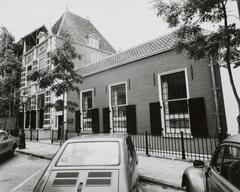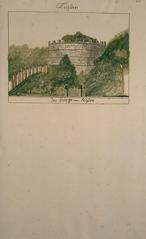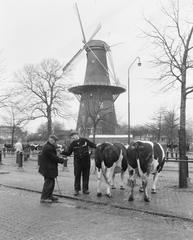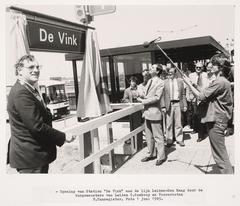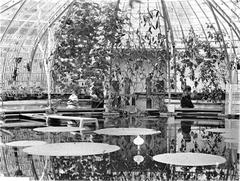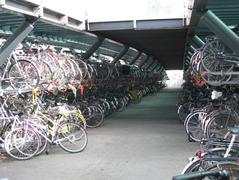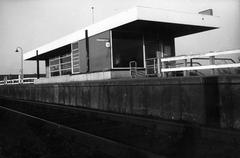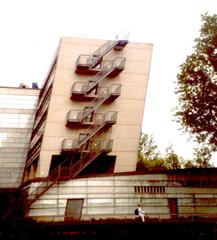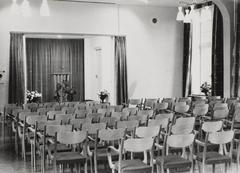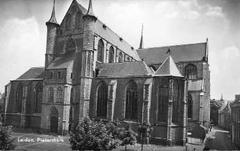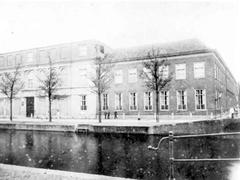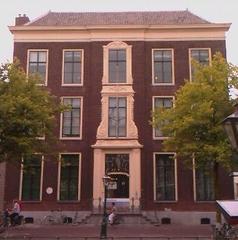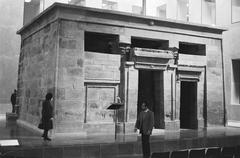Sint Jeroensbrug: Visiting Hours, Tickets, and Historical Sites in Leiden
Date: 04/07/2025
Introduction
Sint Jeroensbrug, or St. Jerome’s Bridge, stands as one of the oldest and most historically significant crossings in Leiden, Netherlands. Dating back to at least 1389, the bridge carries layers of meaning: from its medieval origins and role in the dramatic Siege of Leiden, to its present-day status as a picturesque public monument. Accessible 24/7 and free of charge, Sint Jeroensbrug is not just a crossing over the Vliet canal, but a living symbol of Leiden’s resilience, communal spirit, and architectural heritage (RouteYou; Leiden International Centre).
This guide offers comprehensive information about the bridge’s historical context, practical visiting advice, accessibility, surrounding attractions, and its enduring cultural importance.
Table of Contents
- Early Origins and Medieval Foundations
- The Bridge and the Siege of Leiden (1574)
- Reconstruction and Modern Modifications
- Architectural Features and Urban Context
- Visiting Sint Jeroensbrug: Practical Information
- Events and Local Traditions
- Frequently Asked Questions (FAQ)
- Planning Your Visit: Tips & Resources
- Summary and Final Tips
- References
Early Origins and Medieval Foundations
Sint Jeroensbrug’s documented history begins in 1389, during a period of rapid urbanization for Leiden. The bridge’s location over the Vliet made it an essential link within the city’s burgeoning canal network, closely tied to the economic and social growth of Leiden (RouteYou). Named for Saint Jerome (Sint Jeroen), a Christian martyr from nearby Noordwijk, the bridge underscores the medieval tradition of invoking saints as protectors of civic spaces.
The Bridge and the Siege of Leiden (1574)
One of the defining chapters in the bridge’s history is its role during the Siege of Leiden in the Eighty Years’ War. On October 3, 1574, the Watergeuzen (Sea Beggars) entered the city via the Vliet canal at Sint Jeroensbrug, bringing desperately-needed food to the besieged inhabitants. The distribution of herring and white bread at the bridge is still commemorated every year during Leidens Ontzet, a citywide celebration (Leiden International Centre; Wikipedia; National Geographic).
Reconstruction and Modern Modifications
After the siege, the original wooden bridge was replaced by a stone structure in 1577, in keeping with late Renaissance architectural trends. Significant later modifications included a period with an iron plate bridge, before the current stone arch design was constructed in 1966 to restore its historical character while accommodating modern usage (RouteYou; Wikipedia).
Two commemorative stones, including a famous 1577 gedenksteen, are set in the quay wall, marking both the siege and the bridge’s historical legacy (IVDNT PDF).
Architectural Features and Urban Context
Sint Jeroensbrug is a fixed stone arch bridge harmonizing with Leiden’s medieval and Renaissance cityscape. Its understated design features robust stone arches and iron railings, offering scenic views of the Vliet and Rapenburg canals. Its location forms a crucial link between major historic sites, including Leiden Castle, the Hartebrugkerk, and Leiden University (Holland Beyond).
Visiting Sint Jeroensbrug: Practical Information
Visiting Hours
Sint Jeroensbrug is a public structure open 24 hours a day, 7 days a week. There are no restrictions or closing hours (Visit Leiden).
Ticketing and Entrance Fee
No ticket or entrance fee is required. The bridge is freely accessible at all times as part of Leiden’s public infrastructure.
Accessibility
- The bridge is wheelchair and stroller accessible, with smooth stone surfaces and gentle inclines.
- Well-connected by pedestrian routes and bike lanes.
- 10–15 minutes’ walk from Leiden Centraal Station (Visit Leiden).
- Limited paid parking nearby; cycling is encouraged (Nova on the Road).
Nearby Attractions
- Leiden Castle (De Burcht): Ancient fortress with panoramic city views.
- Rapenburg Canal: One of the Netherlands’ most beautiful canals.
- Museum De Lakenhal: Art and history museum, houses the original commemorative stone (IVDNT PDF).
- Van der Werfpark: Historic park nearby for relaxation.
- Leiden University: The oldest in the Netherlands, with significant historical ties to the bridge (AOI 2025).
Events and Local Traditions
The bridge occupies a central role in Leiden’s annual Leidens Ontzet festival each October 3rd, commemorating the city’s liberation in 1574. Celebrations include parades, music, and the traditional distribution of herring and white bread (National Geographic; Wikipedia). Other events, like canal festivals and Open Monumentendagen (Heritage Open Days), also feature the bridge prominently (Open Monumentendagen Leiden).
Frequently Asked Questions (FAQ)
Q: What are the Sint Jeroensbrug visiting hours?
A: The bridge is accessible 24/7, year-round.
Q: Is there an entrance fee or tickets required?
A: No, the bridge is free for all visitors.
Q: Are guided tours available?
A: While there are no tours focused solely on Sint Jeroensbrug, many city walking and cycling tours include the bridge as a highlight (Visit Leiden).
Q: Is the bridge accessible for wheelchairs and strollers?
A: Yes, it features smooth surfaces and gentle slopes.
Q: How do I get to Sint Jeroensbrug from Leiden Centraal Station?
A: It’s a 10–15 minute walk through Leiden’s historic center.
Planning Your Visit: Tips & Resources
- Best time for photography: Early morning and late afternoon (golden hour) for optimal light.
- Safety: Exercise caution near canal edges, especially in wet or icy conditions.
- Amenities: Nearby cafés, restrooms in museums, and benches by the canal.
- Guided tours and maps: Available at the VVV Leiden Tourist Office (Visit Leiden).
- Recommended events: Leidens Ontzet (October 3), canal parades, and Open Monumentendagen.
For a deeper experience, consider downloading the Audiala app for guided audio tours, interactive maps, and event updates.
Summary and Final Tips
Sint Jeroensbrug is more than a bridge—it is a testament to Leiden’s centuries-old spirit, bridging the city’s storied past with its vibrant present. From the relief of Leiden in 1574 to its current status as a protected national monument, the bridge invites visitors to reflect on history, enjoy sweeping canal views, and explore the rich heritage of the city (RouteYou; Leiden International Centre; Wikipedia; The Crazy Tourist). Its accessibility and central location make it a must-see for anyone in Leiden, whether for a leisurely stroll, a guided tour, or participation in local festivities.
For the most engaging visit, plan your trip around Leiden’s festivals, utilize local guides, and embrace the city’s welcoming atmosphere. Sint Jeroensbrug is not just a crossing over water—it is a bridge through history.
References
- Sint Jeroensbrug Visiting Hours, History, and Visitor Guide in Leiden, 2025, RouteYou (RouteYou)
- Leiden History 101, 2025, Leiden International Centre (Leiden International Centre)
- Sint Jeroensbrug, 2025, Wikipedia (Wikipedia)
- Visiting Sint Jeroensbrug: Hours, Tickets, and Historical Highlights in Leiden, 2025, Visit Leiden (Visit Leiden)
- Leiden Canal Bridges and Urban Life, 2025, Holland Beyond (Holland Beyond)
- Leidens Ontzet and the Siege of Leiden, 2025, National Geographic NL (National Geographic)
- Sint Jeroensbrug and Commemorative Stones, 2025, IVDNT (IVDNT PDF)
- 15 Best Things to Do in Leiden, 2025, The Crazy Tourist (The Crazy Tourist)
- Open Monumentendagen Leiden, 2025, Open Monumentendagen Leiden (Open Monumentendagen Leiden)
- Erfgoed Leiden en Omstreken, 2025, Erfgoed Leiden (Erfgoed Leiden)
- AOI 2025 (AOI 2025)
- Nova on the Road (Nova on the Road)
